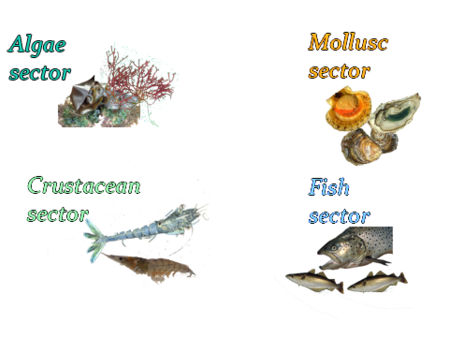Ostreidae production
Oyster production by species
In 2005 the Pacific oyster represented 97.4 % of world oyster production
Pacific oysters Crassostrea gigas represent more than 97% of all oysters produced and this percentage continues to grow, while the relative proportions of other oyster species diminish even though their tonnages remain stable. This is the case with two other cupped oyster species C. virginica (USA) and C. iredalei (Philippines). European flat oyster production remains around 5000 tonnes.
Introduction of Crassostrea gigas
The Pacific oyster Crassostrea gigas was first imported in the 1920s to the coasts of Canada and the United States, then to Australia (Tasmania) and New Zealand in the 1950s. At the beginning of the 1970s, massive importations of spat and genitors were made from Japan and British Columbia into France to restart the industry after the principal species Crassostrea angulata almost died out.
Pacific oyster production in Europe
128 000 tonnes = 3 % of world production in 2005
European production relies on French oyster farming, where supply is in balance with demand at between 120 and 130 000 tonnes/year
World flat oyster production
1986 : 11 870 tonnes
2000 : 6 000 tonnes
The European flat oyster, Ostrea edulis, suffered two successive epizooties and total production, exclusively grown in Europe, is about 5 500 tonnes. The peak in 1996 corresponds to an agreement to allow flat oysters to be grown in the United States; however, this was not continued.
FAO 2007 (2005 production) All production data are given in total weight (flesh + shell).

